Khoja Mashhad Madrasah – A Monument of Medieval Architecture
Madrasah at the "refuge of infidels"
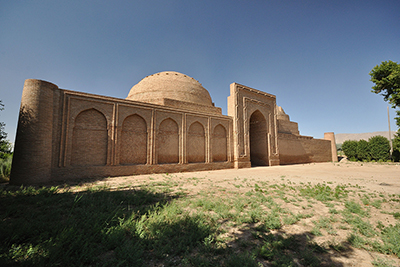
Among the many architectural monuments of southern Tajikistan, the memorial complex of Khoja Mashhad Madrasah is one of the most fascinating. It is located 210 kilometers southwest of Dushanbe and 6 kilometers from the Shaartuz district center, in the lower reaches of the river Kafirnigan.
The name "Kafirnigan" is translated as "a refuge of infidels". At the beginning of the first millennium there were Buddhist and Nestorian (one of the Christian confessions that spread in Persia) monasteries along the banks of this river. Most likely the name of Kafirnigan was given by Arab conquerors, who destroyed the monuments to other religions and slaughtered their adherents.
The area where this historical object is located has a rich yet tragic history. In the 3rd-2nd centuries B.C., after the conquests of Alexander the Great, this area was part of the Greek-Bactrian kingdom. Later, the Greeks were replaced by Tokhars from the Great Steppe. The area became known as Tokharistan, and later the Kushan Empire formed there.
In the 7th century, this territory was conquered by the Arabs, and later captured and devastated by the Mongols. The surrounding area served as a point of attraction for centuries for conquerors, and wanderers alike, and it became called Kabodian.
Khoja Mashhad Madrasah was built in the 9th-10th centuries A.D. by Khoja Mashhad, whose name is a combination of “khoja”—meaning a man who made the pilgrimage to Mecca, and “Mashhad”, likely denoting his origin in the Iranian city of the same name.
As a preacher of Islam and a fairly wealthy man, he was the ideological inspirer, financier, and organizer of the construction of the madrasah (Muslim religious and educational institution).
After his death, Khoja Mashhad was buried in a mausoleum and the complex became a memorial.
Architectural characteristics of the complex
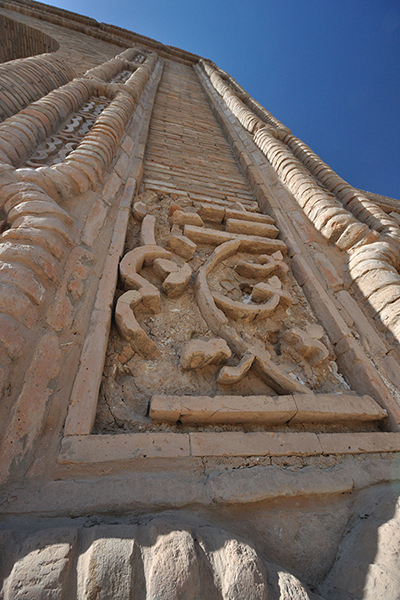
Building the Khoja Mashhad complex would not have been possible without a significant event in the construction technology of the 9th-10th centuries—the transition from raw brick to baked brick. Such bricks were made directly at the construction site and fired in furnaces at temperatures over 1,000 degrees Celsius. The bricks had a square shape with sizes ranging from 23 to 45 centimeters and a thickness of 4 to 7 centimeters.
The results of this technological transition can be observed throughout Central Asia: the Samanid mausoleum in Bukhara, Arabat mausoleum near Samarkand, and Khoja Mashhad Madrasah in the south of Tajikistan were all built using burnt bricks. This technology, resulting in much stronger and harder bricks, allowed architects to design dome and arch structures. Such processes became not just a craft, but an art form that combined mathematical calculation and impeccable taste.
Externally, the architectural monument of the Khoja Mashhad Madrasah is comprised of two nearby domed buildings, connected by a vaulted passage. Research on the site, which began in the 1950s, showed that these two structures were erected at different times: the first one in the 9th-10th centuries, and the second in the 11th-12th centuries. They were erected from fired bricks, whose strength allows them to hold up to present day.
Although externally similar, the two buildings differ in some architectural details. The eastern domed building, 11x11 meters in size and 13 meters in height, uses a special bricklaying technique. Rows of horizontal bricks are "broken" by inserts of vertical bricks. The building contains floating graves left after the burial of those killed as a result of the Mongol invasion.
The western building, 10.5x10.5 meters in size and 14 meters in height, has a great variety of unique bricklaying patterns in the form of a "herringbone". Within the building is a niche in the inner wall of the mosque called a “fur”, which indicates the direction to Mecca. Under the dome itself there is a belt of tiles with remnants of Arabic script. According to the caretaker, it is a kind of visual rosary along which the faithful could move their gaze. In the upstairs of both buildings there are round holes that allow light to penetrate into the rooms.
Both the domes and the vaulted passage between the two domed buildings are unique in their own way in that they are erected without supporting elements. The construction was carried out simultaneously from all 4 corners by making overlapping stairs with bricks, which in the end formed a thin vault the size of only one brick.
One has to admire the talent and diligence of the architects, artists and builders who, with only simple tools, built such harmonious structures. They are perfect in proportion and impressive even in the modern day.
To the north of Khoja Mashhad Madrasah there is a large yard surrounded by ruins of various buildings, including two domed buildings. Unlike the Khoja Mashhad Madrasah and Mausoleum, they were built of raw (unbaked) bricks and therefore have not survived to this day. The entire courtyard and dome halls are filled with old floating graves and ruined gravestones.
An educational institution or khanaka?
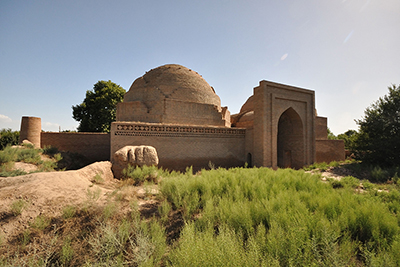
Scientists have not yet fully determined what the true functional purpose of the Khoja Mashhad complex was. According to some researchers, originally it was a madrasah (Muslim secondary school), because around the perimeter of the courtyard adjacent to the madrasah there were small narrow rooms where pupils lived. It is possible that the complex also served as a mosque for local residents. After his death, Khoja Mashhad was probably buried in one of the domed rooms, becoming the reason for the mausoleum's creation.
Other scholars believe that the complex is a “khanaka’, a place where Sufi followers, wandering dervishes, and pilgrims lived and practiced their religious activities. There were large rooms for prayers, meetings, meals, and bathing, as well as burial places of local religious authorities.
There is an assumption that Kabodian native Nosir Khisrav—a prominent poet, philosopher, and traveler of the 11th century—lived and studied here. In his works, he preached the ideas of rationalism and justice, which differed radically from official Islamic ideology. While traveling to Cairo, Khisrav became a follower of the Ismaili branch of Islam and then brought those teachings to the Badakhshan region, where he preached Ismailism until his death. Here are some of his verses:
Trouble for the one who has taken on
The thing is that there is no strength to fulfill.
When you participate in a race of controversy,
Do not get excited, and you will not fall soon.
In the bitter advice that a friend gives us,
Outside - bitterness, in the core - honey.
(Translation source: https://liana-flowers-vlg.ru/en/persidskaya-poeziya-persidskaya-poeziya-kak-klyuch-k-kulture-irana/)
It is also likely that the Khoja Mashhad complex was one of the central elements of the ancient city of Sakara, which existed in the same area. The reason for this assumption is a large number of destroyed structures indicating the existence of an ancient city with well-developed infrastructure.
The Khoja Mashhad complex is still waiting to be fully explored. Meanwhile, a large number of tourists and pilgrims come there at all times of the year to touch the magnificent architecture of the past and feel the spiritual aura of the place.
Restoration of Khoja Mashhad Madrasah and Mausoleum
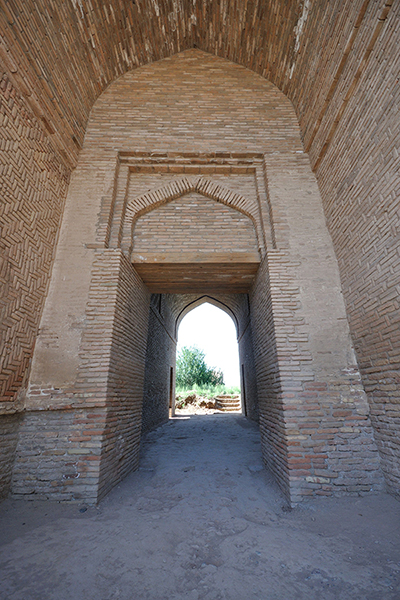
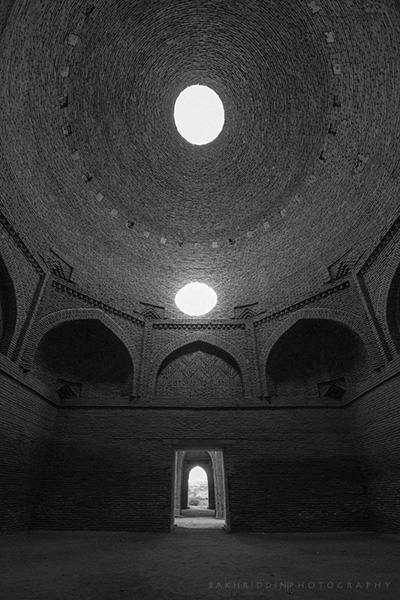
In 2005, the U.S. Embassy to Tajikistan through the Ambassador's Fund for Cultural Preservation sponsored a project to drain the historic site and repair structural damage in order to preserve one of the oldest madrasahs in Central Asia.
The project continued in 2006-2007. During the second phase, the western side of the structure and part of the original building was restored, and in the final phase, the main portal, corner towers, decorative panels, and domes of the eastern part of the building were restored.
Two years later, additional work was done to eliminate and prevent damage caused by water and strengthen the foundations of the building. The total cost of the project was over $132,000.



